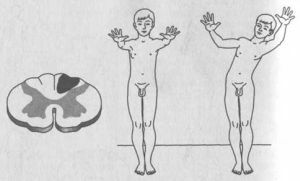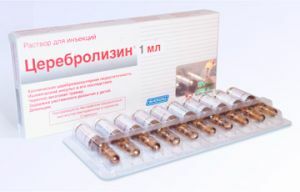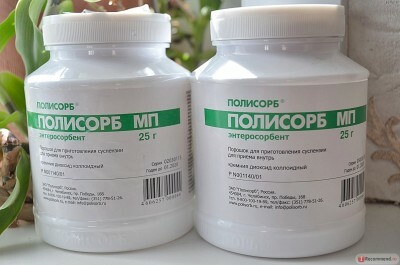 Sensitive ataxia - a nervous disease comes from the Greek word "ataxia" - "disorder", because the balance of a person in a vertical position is violated, and the coordination of movements is completely or partially upset.
Sensitive ataxia - a nervous disease comes from the Greek word "ataxia" - "disorder", because the balance of a person in a vertical position is violated, and the coordination of movements is completely or partially upset.
To understand how the disease develops, it is necessary to understand how control of coordination in the human body is arranged.
In our body there are primary receptors - peripheral ones, which are in the joints, muscles and channels of the inner ear.
They collect information about the position of the human body in space. Then, through the spinal cord, this information comes to the vestibular nuclei in the brain stem.
The cerebellum is the primary organ that participates in regulating the position of a person in space. Thus, with the defeat of the conducting pathways through the posterior columns of the spinal cord, a sensitive ataxia develops.
 A disorder in which a person loses the ability to communicate normally with motor aphasia. Details in the article.
A disorder in which a person loses the ability to communicate normally with motor aphasia. Details in the article.
Shay-Draiger syndrome is a serious incurable disease, in which death occurs within 5-7 years. Methods of diagnosis and alleviation of the patient's condition.
Features of the disorder
The peculiarity of this disease is that the deactivation of impulses of deep tissues that signal along the columns of the spinal cord is observed.
And this can manifest itself in all arms and legs, as well as in any of the extremities. A man struggles to keep his balance standing with his legs shifted and his arms outstretched.
Sometimes the cortex of the parietal lobe of the brain and peripheral nodes are affected.
If the patient has ataxia observed in the lower extremities, which has arisen because of a loss of sensitivity in the joint-muscular sense, he becomes extremely unstable and his gait acquires a stamped appearance, i.e., excessive bending of the legs and foot attack on the floor with effort.
The patient is constantly trying to control his movements visually and when walking, he looks under his feet. With severe damage to the posterior columns, every opportunity to move and be in an upright position is lost.
With closed eyes, the manifestation of this nervous disease is further exacerbated in patients.
The main causes of
The disease is often manifested:
- with lesions of the spinal cord;

- after surgery to remove the tumor in the head;
- vascular disease;
- acute forms of infectious diseases( inflammation of the lungs, otitis, sinusitis, etc.);
- side effects of certain drugs or intoxication by chemicals.
Also the causes of this disease may be consequences with polyneuropathy, a lack of vitamin B12 in the body, a stroke, alcoholism or abnormal development.
Clinical picture and diagnosis
The most reliable symptom in this disease is a violation of the sharpness of movements, unbalance of the gait, in which there is a feeling of walking on cotton wool and a violation of sensitivity.
Sometimes patients have a less severe form of sensitive ataxia. This happens when the disconnection of the spinal cord processes occurs in isolation.
With this form of the disease, a deep sensitivity disorder is not observed.
Diagnostic tests
To diagnose and develop pathology, samples are assigned:
- asymmetry diagnostics;
- compression and extension of the fingers with open and closed eyes;
- sample touch the finger to the tip of the nose and in the supine position reach the heel to the knee.
Approach to therapy - a set of measures
It is impossible to cope with this disease with the course of this disease, therefore, an urgent appeal to a specialist that will reveal the symptoms and the nature of the disease development is necessary.
It is right to diagnose diseases that cause and contribute to the development of a sensitive ataxia.
Typically, treatment involves eliminating the symptoms of these diseases.
The doctor neurologist prescribes medicines:
- B vitamins, riboflavin and immunoglobulin .

- In some cases, requires nootropic drugs like , Cerebrolysin, Amiridin, Galantomine, Stephaglabrin sulfate or other anticholinesterase drugs.
- Immunoglobulin is assigned to maintain the immunity of a patient in the fight against colds and other diseases that cause an immune deficiency.
- In hyperthyroidism or neoplasms, vitamin B2 - Riboflavin is added to the treatment of sensitive ataxia.
Anticholinesterase drugs are used in complex therapy if progressive muscular dystrophy, peripheral neuritis is detected.
These drugs contribute to better excitation in the nerve endings and as a result, help the effective treatment of neuromuscular diseases.
Nootropic drugs are prescribed if sensitive ataxia is associated with cerebral vascular pathology. Used to better circulate blood in the brain, reduce nervous disorders and improve intellectual capabilities.
Often, medical treatment is not successful in fighting the disease. Therefore, it is important to use a comprehensive and individual approach to each patient.
LFK is a well-known method of treating
disorder. In the appointment of a course of therapeutic gymnastics, the fact of regular exercise that is aimed at improving coordination of movements is very important.
Some examples of gymnastics:
- raise the stick from the floor and put it on a shelf located above the head level;
- button up small buttons on clothes;
- stand on toe or on both socks;
- walking in the footprints painted on the floor;
- standing on one leg, the second bend at the knee and take it aside and return to its original position;
- simultaneous lifting of one hand up, and the second one to the side;
- standing to throw the ball into the net;
- daily walking up to 1 km.
 The course of therapeutic gymnastics is usually 20 - 25 procedures. Every day classes are held from 15 to 30 minutes. For the treatment of sensitive ataxia, it is advisable to use a massage of the extremities for about 15 procedures.
The course of therapeutic gymnastics is usually 20 - 25 procedures. Every day classes are held from 15 to 30 minutes. For the treatment of sensitive ataxia, it is advisable to use a massage of the extremities for about 15 procedures.
When applying all these methods - drug therapy, daily medical gymnastics, walking and massage course, the best results are achieved in the treatment of this disease.
And with the active assistance of the patient, even the most incurable one can be put on his feet and made him an able-bodied citizen.
Take care of yourself and your health!



